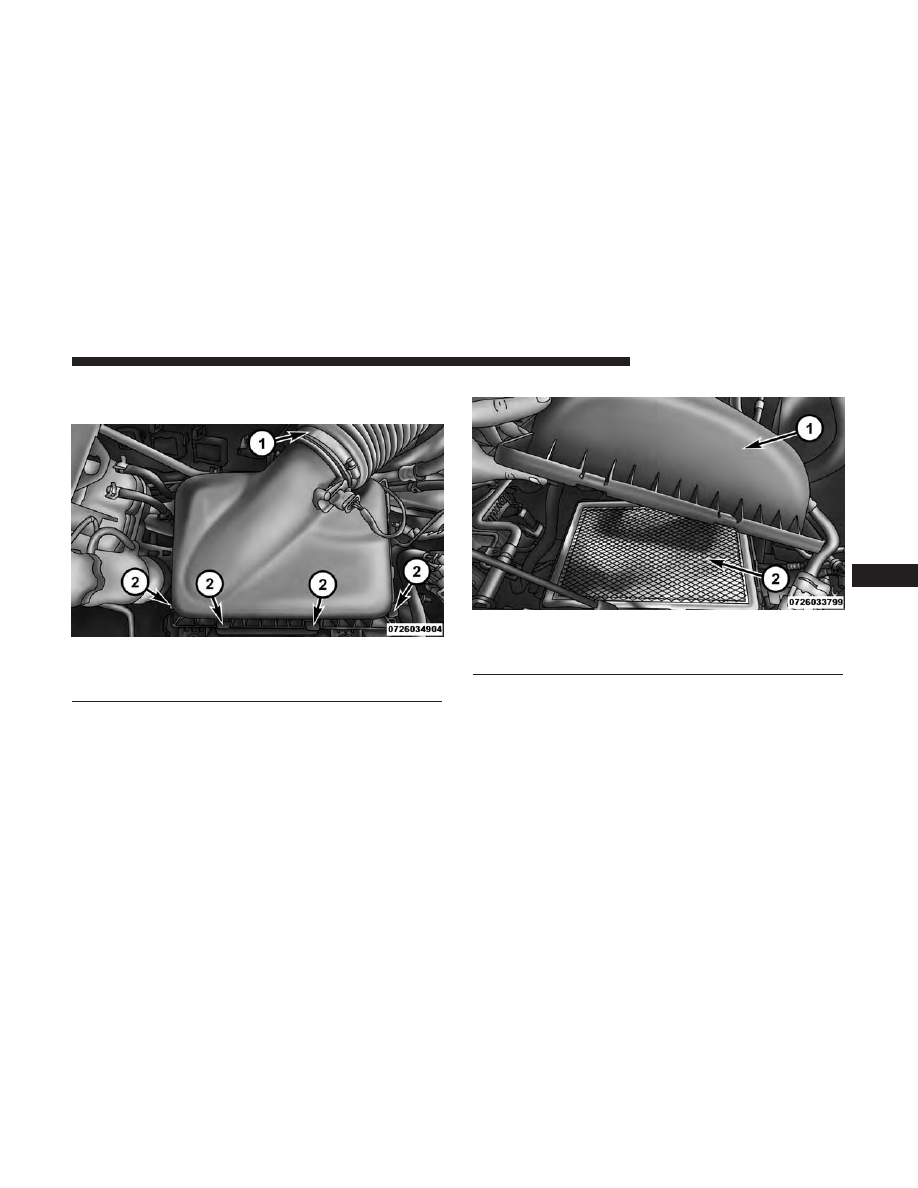RAM 5500 Chassis Cab (2017 year). Manual - part 29

Engine Air Cleaner Filter Removal
1. Release the spring clips from the air cleaner cover.
2. Lift the air cleaner cover to access the air cleaner filter.
Air Cleaner Filter Cover
1 — Clean Air Hose Clamp
2 — Spring Clips
Open Air Cleaner Filter Assembly
1 — Air Cleaner Cover
2 — Air Cleaner Filter
7
MAINTAINING YOUR VEHICLE
455